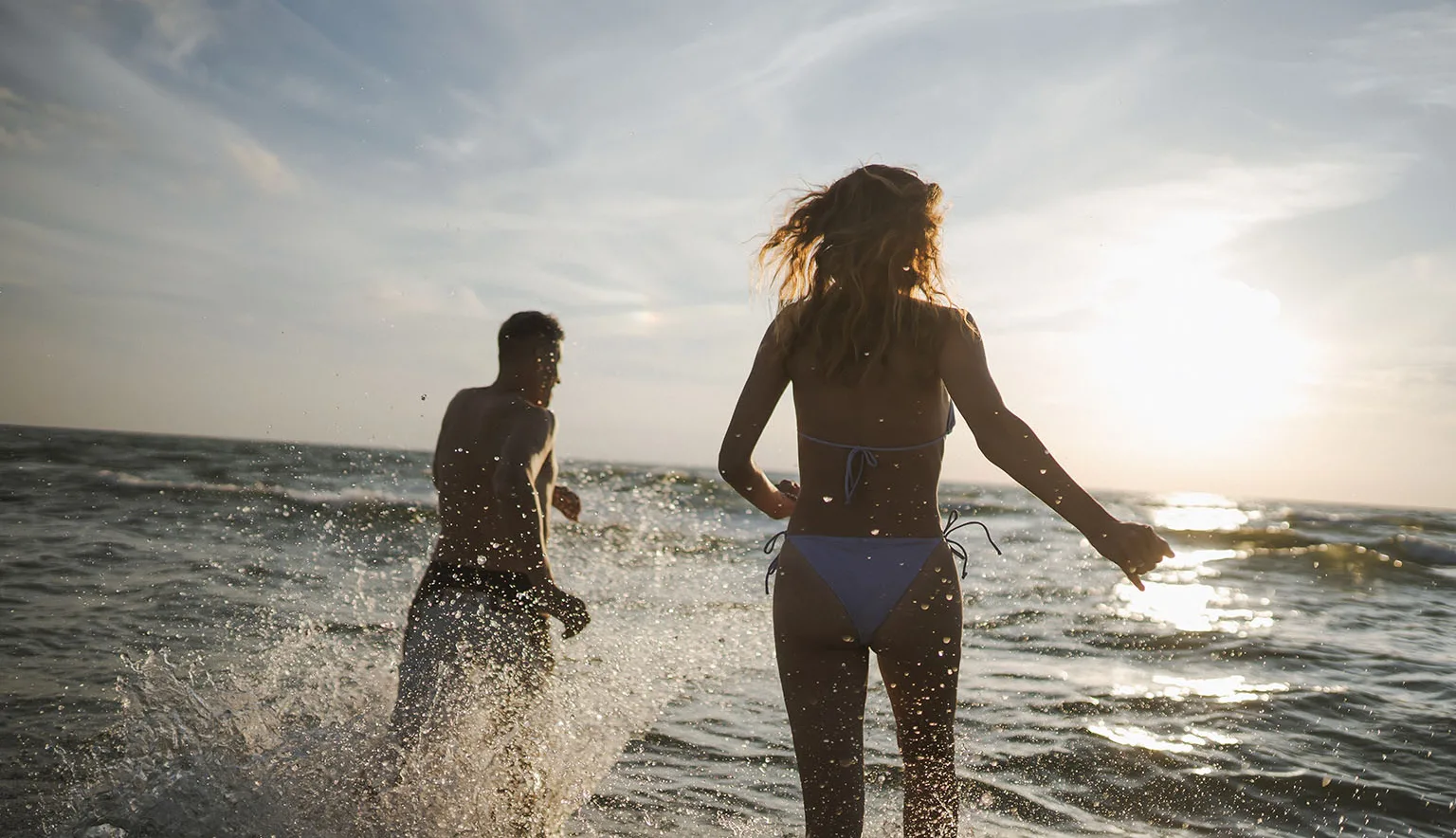Olga Gončarova, Managing Director of Lithuania Travel, discusses how the country has made significant strides in developing its tourism product in recent years. As the recipient of various awards and accolades, Lithuania is becoming increasingly recognised by prominent industry bodies as a destination of choice; as such, the organisation continues to work hard to support and promote it
Q&A WITH LITHUANIA TRAVEL
Firstly, how do Lithuania’s five distinct ethnographic regions, each with their own character and traditions, present different experiences for travellers to explore?
Olga Gončarova, Managing Director (OG): Lithuania’s five ethnographic regions – Aukštaitija, Žemaitija, Dzūkija, Suvalkija, and Lithuania Minor – each offer travellers a unique window into the country’s rich cultural tapestry.
Aukštaitija in the northeast is known for its lush forests, lakes, and wooden architecture. It’s a haven for nature lovers, offering everything from peaceful kayaking routes to traditional village homesteads where you can taste homemade rye bread and local honey.
In the west, Žemaitija is bold and proud, with a strong dialect and deep-rooted traditions. The region is home to the atmospheric Žemaitija National Park and the Hill of Crosses – a powerful symbol of resilience and faith.
Dzūkija in the south, meanwhile, is often called the land of mushrooms and songs. It’s a region of pine forests, traditional black ceramics, and folklore. Travellers here can enjoy slow, immersive experiences like foraging for wild berries or listening to local sutartinės (ancient polyphonic songs).
In the southwest, Suvalkija is known for its openness and generosity. This agricultural heartland has wide fields, hearty cuisine, and a strong literary and historical heritage – perfect for travellers interested in exploring museums, manor houses, and rural life.
Lithuania Minor, once part of East Prussia, is culturally distinct, with German influences tangible in its architecture and local customs. Located along the Curonian Lagoon and the Baltic Sea, you’ll find the charming resort town of Nida, traditional fishermen’s villages, and the shifting dunes of the Curonian Spit.
Each region tells its own story through landscapes, cuisine, unique experiences, and crafts, offering travellers a deeper, more varied experience of Lithuania beyond the usual tourist paths.
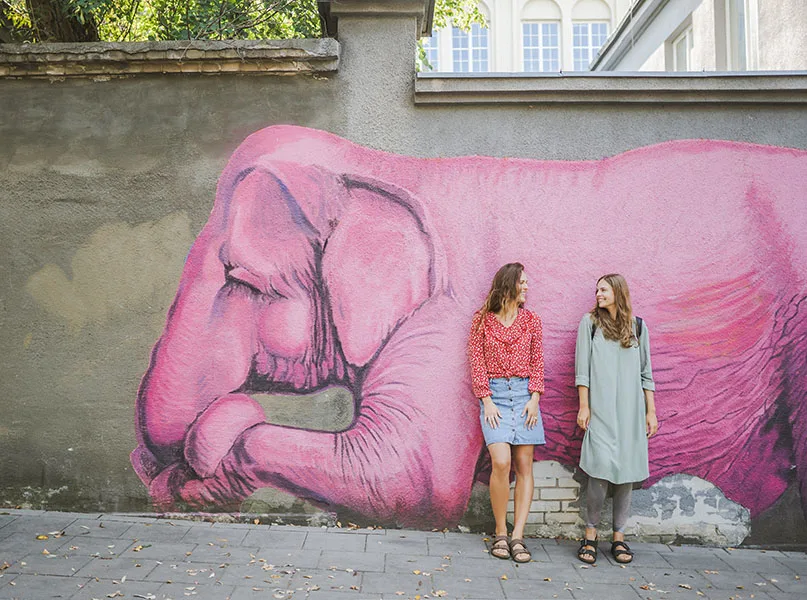
How has Lithuania’s tourism offering evolved over the past decade?
OG: Over the past decade, Lithuania’s tourism offering has evolved remarkably – from a relatively undiscovered destination in Northern Europe to one known for its culture, creativity, and nature-based experiences.
One of the most notable changes has been the shift from traditional sightseeing to more immersive, experience-based travel. Today’s visitors are not just walking through the country’s Old Towns – they’re baking traditional šakotis (Lithuanian cake), joining mushroom foraging tours in Dzūkija, partaking in cooking masterclasses, getting their hands dirty in pottery workshops, relaxing in Lithuanian saunas, and cycling along the Baltic coast.
Local communities and small businesses have stepped up with unique, authentic experiences that bring Lithuanian culture to life.
There’s also been a big leap in quality and infrastructure. Boutique hotels, design-forward guesthouses, and modern restaurants focusing on seasonal, local ingredients have flourished across the country.
Cities like Vilnius and Kaunas have embraced their creative edge, with street art, events, and repurposed spaces like former factories and prisons now hosting cultural festivals, pop-up galleries, and food markets.
Another major evolution is the growing awareness of sustainability and slow travel. More travellers are exploring Lithuania’s national parks, cycling routes, and coastal areas and staying longer in one region to truly connect with the place and people.
In parallel, Lithuania has established itself as a strong wellness destination. The country offers a rich variety of natural therapies and spa treatments – from healing mud and magnesium baths to herbal remedies, amber saunas, and massages.
Wellness seekers head to resort towns like Druskininkai and Birštonas to breathe clean forest air, unwind in mineral-rich waters, and benefit from centuries-old traditions combined with modern medical expertise.
In recognition of this growing sector and the country’s high standards, Lithuania received the ITB Health Tourism Award in March 2025 – a significant milestone highlighting its excellence in spa and wellness tourism.
Finally, Lithuania has become much more confident in telling its story. From UNESCO World Heritage Sites and its pagan heritage to contemporary art and tech innovation, the tourism message has become more diverse, inclusive, and globally appealing.

“Over the past decade, Lithuania’s tourism offering has evolved remarkably – from a relatively undiscovered destination in Northern Europe to one known for its culture, creativity, and nature-based experiences”
Olga Gončarova, Managing Director, Lithuania Travel
How has ecotourism developed in the country recently, and what key destinations can visitors discover in 2025?
OG: In recent years, Lithuania has made significant strides in developing ecotourism, emphasising sustainability and the preservation of its natural landscapes.
The country’s commitment to green initiatives is exemplified by Vilnius being named the European Green Capital for 2025. This recognition highlights the city’s extensive green spaces, eco-friendly transportation options, and variety of outdoor activities that allow visitors to engage with nature responsibly.
Beyond the capital, Lithuania offers numerous ecotourism destinations for visitors. The Nemunas Delta Regional Park, for instance, is renowned for its rich biodiversity and offers activities such as guided canoe tours through the Curonian Lagoon and birdwatching opportunities, especially during the Birdwatching Rally in autumn.
Aukštaitija National Park provides serene landscapes with numerous lakes and forests, ideal for canoeing and hiking, offering travellers an immersive experience in Lithuania’s natural beauty.
These developments reflect Lithuania’s dedication to promoting ecotourism by providing sustainable travel options and preserving its natural heritage for future generations.
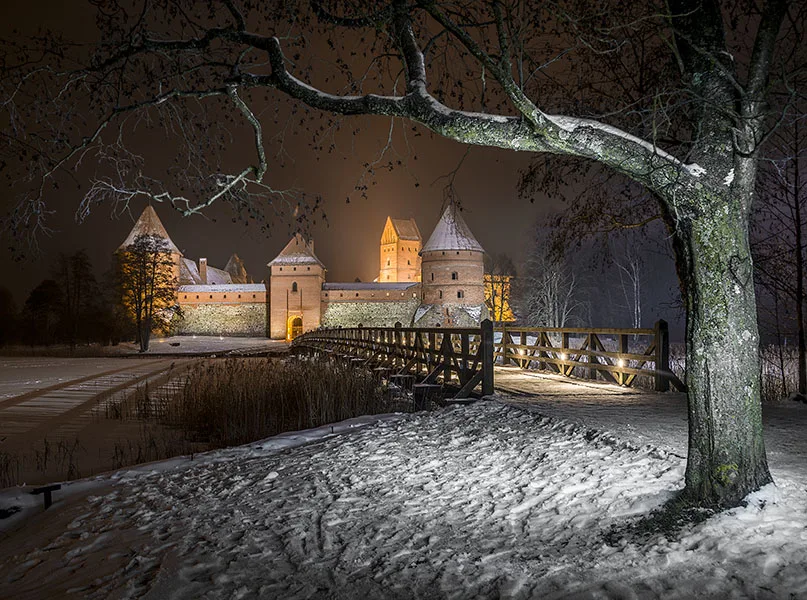
From the ancient archaeological site of Kernavė to Baroque and modernist architectural wonders, there’s a lot of culture to discover in Lithuania. What, for you, are the key artistic and cultural sites?
OG: You’re right – Lithuania offers a fascinating cultural journey through time, and I love how the country blends its ancient roots with modern expression. For me, a few key sites really stand out.
First, Kernavė, the ancient capital and a UNESCO World Heritage Site, is a must-visit. Standing on those prehistoric mounds overlooking the Neris River, you get a powerful sense of Lithuania’s early history and spiritual roots.
In Vilnius, I always recommend exploring the Old Town, especially the Gothic St. Anne’s Church and the Baroque gem of St. Peter and St. Paul’s Church – they’re architectural masterpieces.
The Užupis art district is another favourite. It’s like our version of Montmartre – quirky, artistic, and self-declared as an independent republic, with its own constitution that celebrates freedom, positivity, and creativity.
For a dose of modernism, Kaunas is an underrated treasure. Its outstanding interwar modernist architecture has just been included on the list of UNESCO World Heritage Sites and really gives you a sense of Lithuania’s 20th-century aspirations.
Kaunas is also home to two immersive museums that offer a unique cultural experience – the Art Deco Museum and the Amsterdam School Museum. Both take you back in time with guided tours through restored period interiors that bring the aesthetics, lifestyle, and spirit of the era to life.
Finally, I’d say the Hill of Crosses near Šiauliai is one of the most moving and unique cultural sites – not only for its visual impact but for what it represents in terms of resilience and faith throughout history.
Culture in Lithuania is not just found in grand monuments – it’s also alive in folk music, festivals like Joninės (summer solstice), and even the local markets and crafts. There’s always something to discover.
As a country with four very distinct seasons, can you outline the various activities on offer throughout the year?
OG: Absolutely – one of the things I love most about Lithuania is how the country transforms with each season, offering completely different experiences throughout the year.
In winter, Lithuania becomes a true fairy tale. Cities and towns light up with Christmas markets, festive decorations, and cosy cafés serving hot chocolate and traditional Lithuanian delicacies. Locals head to the countryside for cross-country skiing, sledding, or even skating on frozen lakes. If you’re lucky, you might catch a beautiful snowfall over Trakai Castle in the middle of the frozen Lake Galvė – it’s magical.
It’s also a wonderful time to unwind at one of Lithuania’s many spa resorts, where you can enjoy warm mineral baths, amber saunas, or therapeutic massages after a day in the snow.
Spring brings a sense of renewal. As the days get longer and nature wakes up, it’s the perfect time for hiking in national parks like Aukštaitija or Žemaitija. Vilnius in spring is especially lovely – its parks and Vilnius University Botanical Garden come alive with blooming flowers, whilst outdoor cafés start to reopen. Easter traditions also make spring a culturally rich time to visit.
Summer is when Lithuania really comes to life. The lakes become the heart of social life – swimming, paddleboarding, or just relaxing by the water with friends. It’s festival season too, from music festivals like Karklė by the sea to traditional celebrations like Joninės, where people gather to jump over bonfires and search for mythical fern blossoms. The Curonian Spit, with its sandy dunes and pine forests, is a summer favourite.
Autumn is all about golden forests and harvest time.
It’s ideal for mushroom picking – something many Lithuanians are passionate about – and taking long walks in places like the Labanoras Forest. Autumn also brings cultural events like film festivals, concerts, and exhibitions indoors, making it a reflective and cosy season.
Each season offers something unique, and Lithuanians really embrace the rhythm of nature. It’s part of what makes living here – or visiting – so enriching.
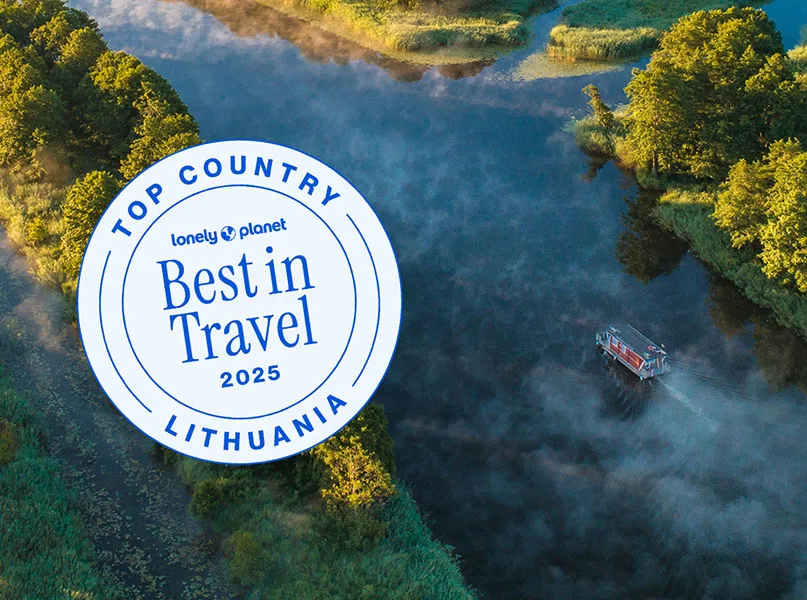
From traditional Lithuanian cuisine to modern Michelin-star masterpieces, what standout dishes, restaurants, or markets are a must-try?
OG: Lithuania is truly emerging as one of Europe’s most exciting foodie destinations, where ancient culinary traditions meet bold, modern creativity. For first-time visitors, there’s so much to taste and discover.
You absolutely can’t leave without trying some of our beloved traditional dishes. Think cepelinai, the ultimate comfort food – hearty potato dumplings filled with meat and topped with crispy bacon and sour cream.
Šaltibarščiai, a pink cold beetroot soup that’s as eye-catching as it is refreshing, even has its own festival! The delicious and pink Šaltibarščių festivalis (Vilnius Pink Soup Fest) is celebrated on 31st May and not to be missed. Add to that the tangy richness of rye bread, the sweetness of a traditional apple cheese dessert, and the unmistakable taste of local honey, and you’ve got a delicious window into Lithuania’s roots.
Our culinary scene continues to gain international acclaim, with the second edition of the MICHELIN Guide Lithuania unveiled in 2025. This year, 37 restaurants across the country were recognised by Michelin inspectors – up from 26 the previous year – showcasing the rapid development and growing sophistication of Lithuania’s gastronomy. Four Vilnius-based restaurants – Demo, Džiaugsmas, Pas mus, and Nineteen18 – retained their prestigious Michelin stars, underlining their consistent excellence.
The Bib Gourmand category, which honours great food at moderate prices, also saw significant growth. Four new restaurants, all in Vilnius – Augustin, B’ARN Bistro, El Gato Negro, and Kristoforas – were awarded Bib Gourmand titles, joining last year’s winners – 14Horses, Gaspar’s, and Le Travi (Vilnius), as well as Nüman (Kaunas) – all of which retained their distinctions.
The list of recommended restaurants also expanded, with new entries like MOTÍF in Vilnius and Alba Bistro in Klaipėda joining a lineup that includes notable favourites such as Amandus, Dine, Pacai, Uoksas, Monai, and Apvalaus Stalo Klubas, amongst many others across Vilnius, Kaunas, Klaipėda, Trakai, and beyond.
Special Michelin awards this year celebrated individual talents and new openings. Darek Medvedev of Augustin received the Young Chef Award, Martynas Pravilionis from HeJi was honoured with the Sommelier Award, Lina Marija Balčiūnaitė from Red Brick earned the Service Award, and Arnas Petronis of B’ARN Bistro was recognised with the Opening of the Year Award.
These achievements mark Lithuania’s solidifying presence on the global culinary map, positioning the country as a compelling destination for gastronomic tourism.
If you’re looking for something more casual but equally delicious, Halės Market in Vilnius is a must. It’s one of the oldest markets in the country and offers a buzzing mix of local produce, smoked meats, cheeses, and trendy street food.
For plant-based food lovers, Lithuania is also very vegan-friendly. Try RoseHip Vegan Bistro or Kiras café in Vilnius for colourful, inventive dishes and amazing vegan desserts in equally vibrant settings.
Whether you’re sitting down to a Michelin-star tasting menu or grabbing a pastry at a local market, Lithuania invites you to slow down, savour, and connect with the land, tradition, and every bite.
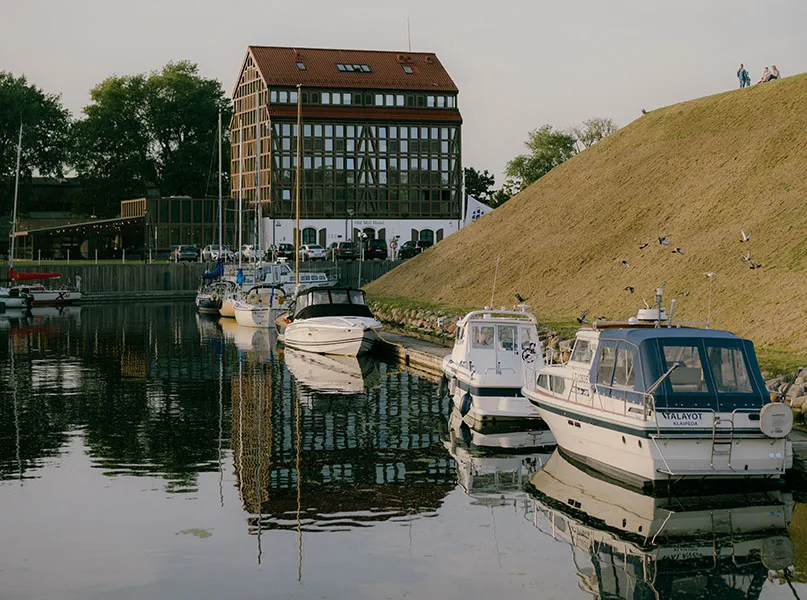
Aside from Lithuania’s main attractions, what hidden gems are on offer for tourists to discover?
OG: Beyond popular sights like the Vilnius Old Town, Trakai Castle, and Curonian Spit, Lithuania is full of hidden gems waiting to be explored by those willing to wander off the beaten path.
One such treasure is the Hill of Witches in Juodkrantė – a whimsical forest trail filled with wooden sculptures inspired by Lithuanian folklore. It’s a magical experience, especially for families or anyone curious about the country’s mythological roots.
Another lesser-known spot is the Pūčkoriai Exposure, just outside Vilnius. As the highest and most impressive geological outcrop in Lithuania, it offers beautiful walking trails along the Vilnia River and panoramic views of the surrounding forest.
For a touch of tranquillity, Nida’s dune trails provide both history and natural beauty, whilst Kernavė, Lithuania’s first capital and a UNESCO World Heritage Site, offers grassy mounds and archaeological sites that feel untouched by time.
Foodies and culture seekers should head to Užupis, a quirky, bohemian district in Vilnius that even declared itself an independent republic. It’s filled with art installations, cosy cafés, and a strong creative spirit.
Finally, if you’re travelling in autumn, make sure to explore Tytuvėnai Regional Park or the Dubysa river valley – lesser-known but breathtaking in fall colours and ideal for peaceful hikes or bike rides.
These hidden gems reveal the quieter, more personal side of Lithuania – one that’s rich in nature, story, and surprise.
Lithuania was recently named on Lonely Planet’s Best in Travel 2025 list. What does this mean to the country and organisation?
OG: Being named the number one destination in Europe and the second-best in the world by Lonely Planet is a tremendous honour for Lithuania and a proud milestone. It’s a clear sign that the world is starting to take notice of what we’ve always known – Lithuania is a destination filled with rich culture, natural beauty, and unique experiences that leave a lasting impression.
But this year’s recognition didn’t stop there. Vilnius has been named the European Green Capital for 2025, spotlighting the city’s commitment to sustainability and quality of life.
Vilnius has also been crowned as this year’s European Capital of Christmas, celebrating its magical festive spirit, creativity, and inclusive events that bring locals and visitors together. In March, Lithuania proudly received the ITB Health Tourism Award, affirming our growing reputation as a top destination for wellness and medical travel.
Together, these accolades reflect not just one-time achievements but the result of consistent effort, innovation, and collaboration across all sectors. For our organisation, they serve as a powerful validation of our mission – to position Lithuania as an inspiring, forward-thinking, and welcoming destination – and inspire us to continue telling our story to the world with even more confidence and heart.
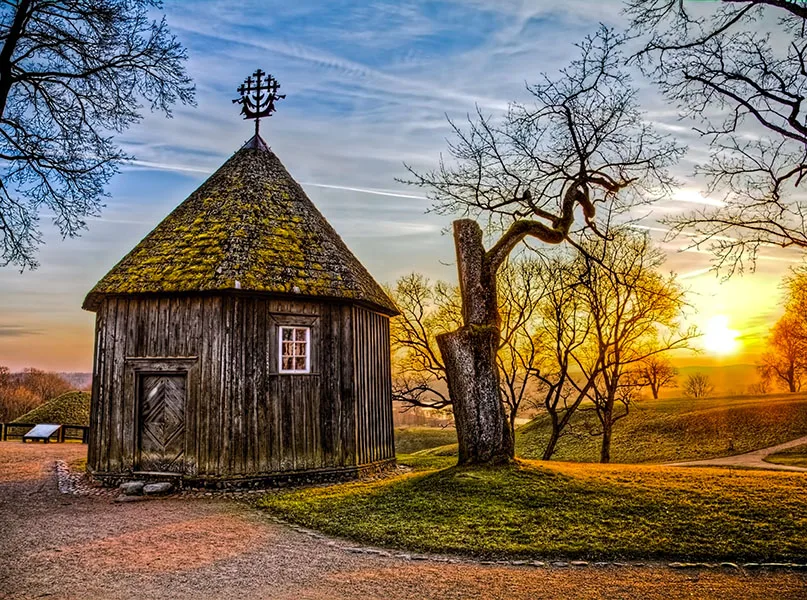
Finally, are you optimistic about the future of the tourism industry in Lithuania?
OG: Yes, I’m very optimistic about the future of tourism in Lithuania. In fact, I believe we’re only just beginning to tap into our full potential as a destination.
Over the past few years, we’ve seen a clear shift both in how Lithuania is perceived internationally and how it presents itself to the world.
Recent international recognitions, such as Lonely Planet’s Best in Travel 2025 list, Vilnius receiving the title of European Green Capital for 2025, and the ITB Health Tourism Award all point to growing global interest and trust in what Lithuania has to offer.
What makes me most hopeful, though, is the way Lithuania is embracing sustainable, experience-driven travel. We’re seeing more investment in local communities, nature-based experiences, wellness tourism, and cultural heritage. From Michelin-starred restaurants to eco-conscious city planning, there’s a clear commitment to quality, authenticity, and long-term impact.
Tourists today are looking for meaningful, off-the-beaten-path experiences, and Lithuania delivers that in spades.
Whether kayaking through our wild rivers, exploring UNESCO World Heritage Sites, experiencing centuries-old traditions, or enjoying the buzzing creative scene in Vilnius and Kaunas, there’s something truly special here.
With continued collaboration between the public and private sectors, smart innovation, and a focus on sustainability, I’m confident Lithuania will continue to grow as a leading destination in the region and beyond.


